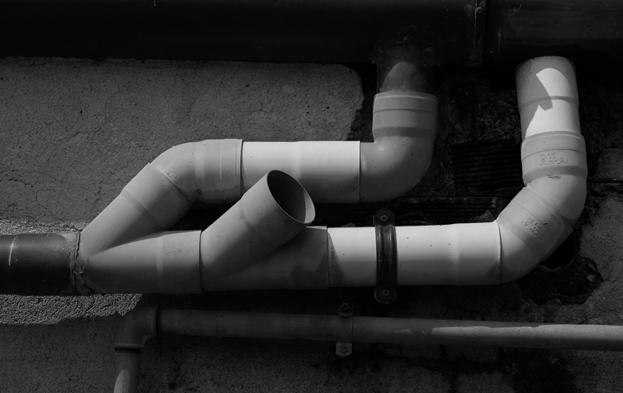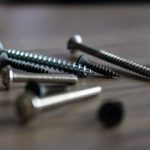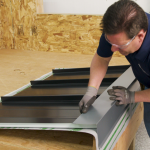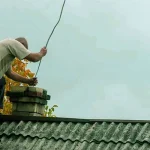Environmental Impact of Sewer Line Repairs and Water Quality
Our homes depend on hidden pipes removing wastewater from our kitchens, baths, and backyards. When those pipes fail, how we repair them can either protect or damage the rivers, soils, and air our families depend on. Most of us rarely think about those pipes and all depends on how they perform – until we are forcibly reminded by a stinky smell or soggy patch.
In this article, we will outline how various methods of sewer line repair impact the surrounding aquatic systems, local ecologies, and even drinking water, and give examples of alternatives that help us live lightly on the land, while still having reliable household plumbing!
What Happens Downstream?
A broken water pipe allows raw sewage to leak into storm drains that flush creeks. This discharge adds bacteria, nutrients, and microplastics that create algae blooms and stress fish and amphibians.
Because we live in a semi‑arid region, every drop matters. The moment we schedule sewer line repair for Colorado Springs, CO, we trigger a chain of pumping, hauling, and flushing that consumes water and energy. By asking contractors how they capture and treat runoff, we shrink that footprint and prevent raw effluent from sneaking past treatment plants.
Swift action also prevents larger messes. Minor leaks create voids that cave in sidewalks; emergency crews then rush in with quick fixes instead of planned, eco‑friendly solutions. Acting early keeps pollutants out of downstream picnic spots and reservoirs, safeguarding recreational waterways our kids cherish.
Soil Contamination Risks
Excavation exposes soil to leaked sewage plus fuels and lubricants from machinery. If residues linger, kids and pets may contact them after the next rain, and plants can draw toxins up into edible produce.
We can cut the risk by confirming that crews use drip‑less hydraulic lines, spill mats, and sealed fuel cans. A written disposal plan for any contaminated earth, complete with landfill manifests, protects property value and community health.
Routine water line inspection before digging pinpoints weak spots so crews disturb only what’s necessary. Less open ground means fewer sediments and toxins washing into creeks during afternoon thunderstorms, and lawns recover faster once backfilled.
Trenchless Technology Benefits
Open‑cut trenches still work, but they uproot trees, crack driveways, and expose wide swaths of soil. Modern trenchless methods—cured‑in‑place pipelining and guided pipe bursting—pull new pipe through two small access pits instead, keeping almost all landscaping intact. See this link to learn more.
Disturbing less land preserves root networks that anchor soil and filter rain. Shorter work windows mean fewer days of loud diesel engines; that drop in emissions helps our region meet air‑quality goals and lets neighbors breathe easier.
Trenchless gear is quieter. A compact hydraulic unit hums compared with the clatter of a full excavator fleet, making life easier for toddlers, pets, and night‑shift parents. Over the life of the line, the smooth interior resists roots, delivering durable clogged drain solutions without routine chemical treatments. Though trenchless techniques can cost a bit more upfront, savings in yard restoration and long‑term maintenance usually balance the ledger.
How to Reduce Wastewater?
Even green repairs need flushing and tool cleanup, but we can shrink the water tab:
- Schedule work at low‑use hours. Mid‑day slots avoid morning shower peaks and lighten loads at treatment plants.
- Capture test water for reuse. Some crews route clear test flows into barrels for garden irrigation.
- Upgrade fixtures afterward. Low‑flow faucets and showerheads installed post‑project lock in savings.
Paired with leak checks and drain screens, these habits can trim household demand by 20 percent while the new pipe settles in. Less wastewater means smaller energy bills and reduced greenhouse gas emissions from pumping and treatment plants.
Long‑Term Sustainability Tips
One repair can open doors to create lasting routines:
- Create an annual camera calendar. One scan can identify cracks early and prevent sewer back-ups,
- Explore alternative materials. PVC, HDPE, Cured-in-place pipe (CIPP-see https://en.wikipedia.org/wiki/Cured-in-place_pipe for more details) lining—all have different life-spans and impacts on the environment; think and plan ahead before an emergency,
- Restore native vegetation. After back-filling the pipe, re-plant drought tolerant vegetation; their deep-root systems slow run-off and trap other pollutants,
- Advocate for green infrastructure. Attend city meetings, advocate for budgets and funding for trenchless mains, and permeable pavements,
- Educate about the water cycle. When children see where their toilet flushes to (treatment plant), many connect and remember they shouldn’t use hard corrosive cleaners that damage even new lines.
By treating sewer systems more like living systems in it as part of the natural world, instead of utilities, we can choose repairs that protect and defend our families and the environment. Thoughtful planning, twenty-first century technology, and diligent maintenance for our plumbing systems allow us to enjoy a safe plumbing system, while making sure the quality for water is not sacrificed for all future generations.















